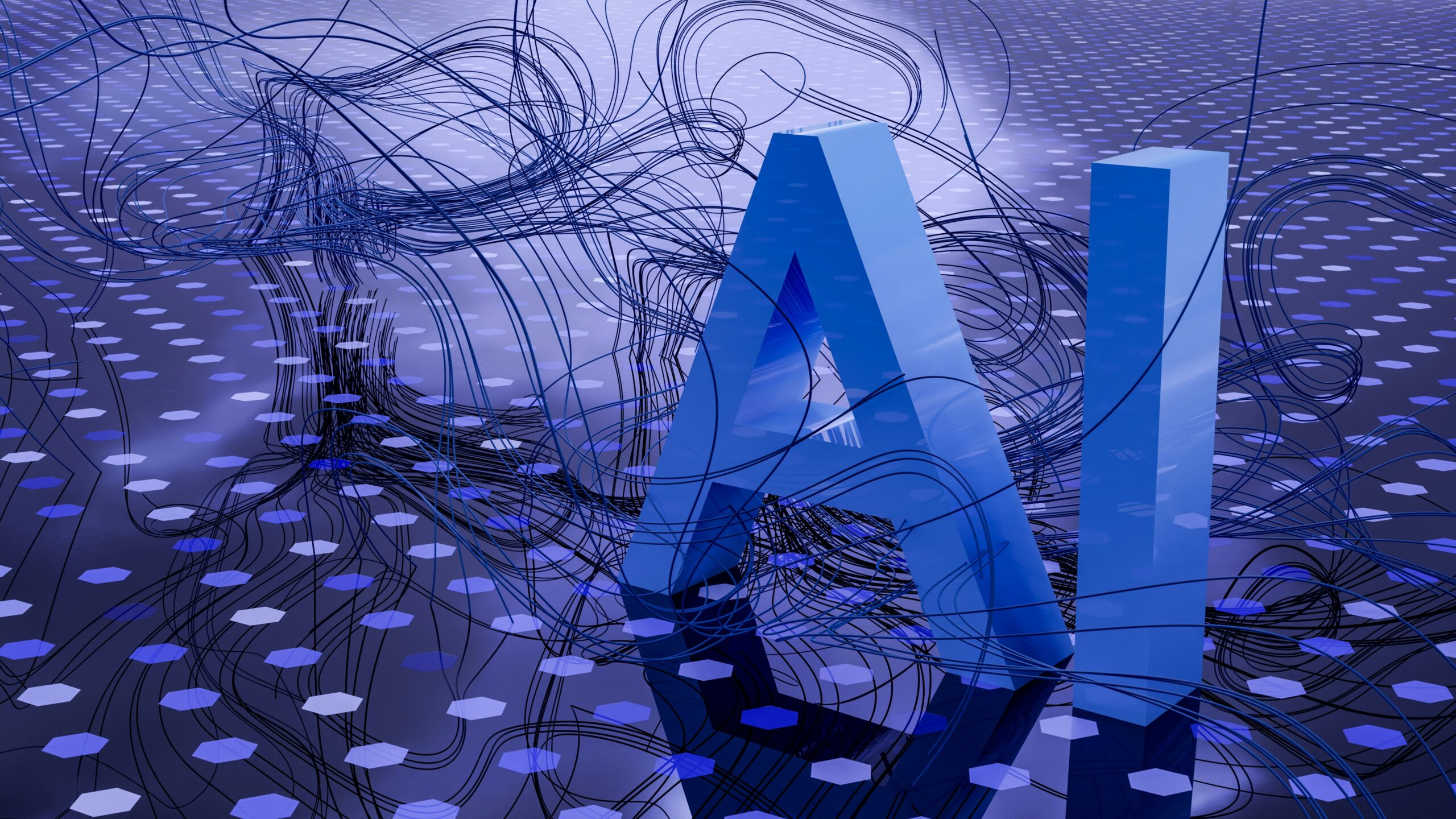Legacy software, old applications or platforms built on outdated technology can hobble a business. Over time, these systems become inefficient, expensive to maintain, and vulnerable to security threats. Yet companies cling to them because if it ain’t broke, don’t fix it until it is. The good news is that every legacy application can be upgraded or replaced on modern platforms. This guide explores when and why to modernize legacy software, covering warning signs, risks of delay, benefits of new platforms, and the steps involved in a successful migration. We’ll also share real-world examples of organizations that transformed their legacy systems. By understanding the risks of legacy systems, the advantages of modernization, and the best practices for upgrading, you’ll know exactly how to upgrade legacy software to meet today’s needs.
Legacy software, such as old database platforms, monolithic ERP systems, or decades-old custom code, often started as mission-critical tools. However, as legacy systems age, continuing to use them can result in slower performance, higher resource consumption, and more frequent failures. Vendors stop supporting outdated platforms, and newer technologies (cloud, AI, mobile) remain out of reach. This leaves businesses grappling with rising maintenance costs, security gaps, and stalled innovation. We begin by examining the risks of sticking with legacy systems and the signs that it’s time to modernize.
Risks of Legacy Systems
Clinging to legacy applications carries serious risks. Outdated systems often become bottlenecks that impede growth and introduce hidden dangers. Here are the key risks:
Security Vulnerabilities
Legacy software usually misses critical security updates. Vendors focus on new products, so outdated hardware and software are more susceptible to cyberattacks. Old platforms lack modern defences (encryption, firewalls, patches) and often cannot integrate with current security tools, leaving the business “at risk for breaches.” In short, the older the system, the easier it is for hackers to exploit it.
High Maintenance Costs
Contrary to popular belief, maintaining legacy code can be extremely expensive. For many organizations, the costs of keeping [legacy systems] running are lofty, far more expensive than it would cost to simply overhaul your software. Every bug fix or environment change on obsolete platforms requires rare expertise. Frequent hotfixes and workarounds consume IT budgets and staff time that could be invested in innovation instead of upkeep.
Poor Performance and Inefficiency
Ageing systems often run slowly and are error-prone. Users describe them as “slow” with long load times, lags, and crashes. This inefficiency reduces employee productivity and frustrates customers. Out-of-date architectures are not optimized for today’s workloads. As NorthBuilt notes, legacy systems struggle to handle modern user demands and can bottleneck mission-critical processes.
Limited Scalability and Integration Problems
Legacy platforms were not designed for the dynamic, connected world we live in. They often cannot scale to handle spikes in traffic or integrate easily with modern tools. Newer cloud services, APIs, or mobile interfaces simply do not work seamlessly with them. This leads to duplicate data, disconnected workflows, and data silos.18 Without easy integration, businesses end up running legacy apps and modern apps separately, causing inefficiency and missed opportunities.
Vendor Support and Compliance Gaps
Many legacy technologies are no longer supported by their creators. If a problem arises, neither the original vendor nor the small pool of third-party experts may help. Worse, outdated systems often cannot meet current regulations. For example, a legacy database might not support GDPR data controls, causing compliance issues.
In summary, sticking with legacy software creates safety, cost, and agility risks. As one industry study puts it, Outdated technology can create real risks: security vulnerabilities, compliance issues, limited scalability, integration problems, and high maintenance costs. If you are seeing these warning signs, it is time to plan for a legacy software upgrade. Next, we will look at the upside: what you gain by moving to modern platforms.
Benefits of Modern Platforms
Upgrading to modern software architectures and cloud-based platforms unlocks major benefits. Modern systems are faster, more secure, and far more flexible than their predecessors. Consider the following advantages:
Migrating legacy applications to a modern platform delivers immediate business gains. Modernized systems tap into “new technologies, such as AI, machine learning, and big data” by moving to cloud or current architectures. They support real-time data access, remote work models, and automatic backup features impossible on old systems. In practice, companies report dramatic performance boosts. One case noted a “significant increase in efficiency and productivity” after a database migration. Bottlenecks vanish and applications run smoothly without constant restarts or workarounds. Improved speed means employees get tasks done faster and customers get better experiences.
Improved Performance & Scalability
Modern architectures are built to scale elastically. By leveraging cloud infrastructure or microservices, businesses can handle high loads without slowdowns. Optimized code, newer frameworks, and better databases also reduce latency and downtime. As a result, systems respond faster and can grow with business needs rather than holding them back.28
Lower Maintenance Costs
Once on a current platform, maintenance becomes cheaper and easier. Shifting to standardized environments (like cloud or containerization) reduces technical debt. Teams spend less time patching and more time building value. One analysis found that modernizing reduces the burden of technical debt by eliminating inefficient code and outdated dependencies, ultimately cutting costs and freeing IT resources for innovation.
Enhanced Security and Compliance
New platforms come with modern security features. Upgrading locks to the latest encryption, authentication, and monitoring tools. Consequently, businesses can fix long-standing vulnerabilities in one go and better satisfy regulatory requirements. A modern system can quickly adopt the newest cybersecurity practices, whereas a legacy app is stuck missing patches. This greatly reduces the risk of data breaches and compliance violations.
Better Integration and Agility
Modern systems are built for an interconnected world. They support standard APIs, cloud services, and modern middleware that legacy platforms lack. This means you can easily add new features like mobile apps, analytics, or third-party services. Cloud migration especially enables seamless integration with advanced tools (AI analytics, IoT platforms, etc.). The result is a more agile IT environment that can adapt rapidly to new business opportunities.
Improved User & Customer Experience
Finally, modernizing lets you update the front-end and UX. Legacy apps often have clunky, outdated interfaces. Migrating to a new stack enables user-friendly, responsive interfaces on web and mobile. Smoother experiences lead to happier employees and customers. Upgrading often “implements [s] personalization features” and delivers faster, more intuitive service.
In short, moving off a legacy system yields faster performance, lower costs, stronger security, and greater innovation potential. One infographic summary of modernization notes benefits like unlocking new analytics, competitive advantage, and future-ready operations. These gains can pay back the modernization investment many times over.
Before jumping in, though, you should be aware of what the migration process entails. The next section outlines the steps to upgrade legacy software, from initial assessment to final rollout and shares best practices for a smooth transition.
Migration Process
Upgrading legacy software is a complex project, but careful planning makes it manageable. A typical modernization process includes the following steps:
- Assessment & Planning: Start by auditing the current system. Document its architecture, dependencies, and pain points. Identify which features are business-critical. Determine the costs of maintenance versus modernization and get stakeholder buy-in. This stage defines the scope and goals of the upgrade. For example, you might decide to move to the cloud, split a monolith, or build a microservices-based version. Empyreal Infotech’s IT consulting team can help here by “analyzing your business structure and [charting] a roadmap” for modernization.
- Strategy Selection: With the system understood, choose the right modernization approach. Industry frameworks like Gartner’s “7 R’s” describe options: Rehost (lift-and-shift to new hardware/cloud), Replatform (make minimal changes while moving OS or database), Refactor/Modularize (reorganize code or adopt microservices), Rearchitect (redesign significant parts, e.g., to microservices), Rewrite/Replace (build a new system from scratch), or Retire (if a function is no longer needed). Each has its trade-offs. For instance, rehosting is fast but changes little, while rewriting maximizes flexibility but is costly. Many projects use a hybrid approach: keep what works, rewrite what does not, and rebuild only key parts.
- Design & Architecture: Create a target architecture based on the chosen strategy. This may involve selecting new platforms (cloud vendor, database, language/framework) or designing new microservices. Define integration points with other systems. Set up version control, deployment pipelines, and security standards for the new system. If moving to the cloud, design your network, security groups, and backup plan. Empyreal Infotech emphasizes designing solutions that “align with your business goals and leverage modern technologies.”
- Data Migration: Legacy apps hold business data that must be moved carefully. Plan a data migration path: map old schemas to new ones, clean outdated data, and ensure consistency. Often, a parallel run of old and new systems is needed during a transition period. Tools or middleware might be used to transfer data without downtime. Thorough testing is critical to ensure no data is lost or corrupted.
- Development & Refactoring: Begin building or refactoring the application. If refactoring, clean up code (remove dead code, modularize, optimize). If rewriting, develop new services/modules in parallel. Adopt modern best practices: use microservices or containerization where appropriate, and implement robust APIs for integration. Also, update the user interface, for example, build a new web frontend or mobile app if needed. Throughout, use Agile cycles: develop iteratively, demo progress, and gather feedback. This avoids a “big bang” surprise at the end.
- Testing and Quality Assurance: Rigorously test the new system at each stage. Functional testing ensures features still work. Performance testing checks the system under load. Security testing validates protections. Also, conduct user acceptance testing with real stakeholders. Testing often reveals that some legacy assumptions (e.g., business rules, input validation) need revisiting. Fix these issues before full rollout.
- Deployment & Cutover: Deploy the modernized application in production. Many organizations use a phased or parallel approach: run the new and old systems side by side and route a subset of traffic to the new one. This “strangler fig” pattern allows gradual cutover and quick rollback if problems occur. When confidence is high, fully switch over to the new platform. Ensure a rollback plan is ready during this phase.
- Training & Change Management: Do not forget the people side. Train your team on the new system. Update documentation and processes. Communicate clearly with users about the changes. Many project delays arise from underestimating training needs, so plan it in from the start.
- Monitoring & Continuous Improvement: After launch, continuously monitor the new system’s performance, security, and usage. Gather metrics to catch any anomalies early. Modernization is not one-and-done; plan for ongoing maintenance and updates. In fact, “Annual Maintenance Services” or managed support is often needed to keep the modern software aligned with evolving needs.
A successful upgrade requires not just technology, but the right process and expertise. Empyreal Infotech’s IT Consulting services, for example, emphasize phases like Analysis, Strategy, Development, and Performance improvement, ensuring each step is completed with expert guidance. They note that applying a clear process—” analysis → strategy → development → performance → improvements”—leads to faster, smoother results.
How do you upgrade legacy software?
Upgrading legacy software generally involves the steps above: start by auditing the old system and then choosing a strategy (lift-and-shift, refactor, rewrite, etc.). Common approaches include refactoring code to run on modern platforms, breaking monolithic apps into microservices, moving applications and data to the cloud, and incrementally replacing outdated modules. Throughout, the key is careful planning: you must migrate data safely, maintain integrations, and test extensively. Modern DevOps practices, such as continuous integration and automated testing, make the transition safer and quicker. In practice, businesses often start by keeping existing business logic, then modernizing infrastructure (e.g., cloud), and finally overhauling user interfaces and APIs. With the right expertise and tools, the legacy upgrade becomes a systematic process rather than an upheaval.
Overall, remember that migration is not a single action but a journey. It often involves iterative phases, blending old and new systems until the legacy footprint is fully replaced or integrated. With each phase, risks decrease and benefits increase. Now, let us look at a few real organizations that have walked this path and reaped the rewards.
Real-World Examples
Many leading companies have undergone major legacy modernization, proving that the payoff can be huge.
- Amazon (Monolith to Microservices): In its early days, Amazon ran as a single, tightly coupled application. As usage exploded, this monolith became a major bottleneck deployments took hours, and scaling required duplicating the entire app. To overcome this, Amazon decomposed its monolith into thousands of independent microservices. Each service got its own database and deployment pipeline. They introduced API gateways, service discovery, and an eventual consistency model to manage data. This transformation meant development teams could release new features hundreds of times per day without conflicts, and Amazon could scale specific services independently. Today, Amazon’s architecture is a model of agility and reliability, supporting peaks like Prime Day without downtime.
- Netflix (On-Premise to Cloud): After a catastrophic outage in 2008 that knocked out its DVD shipping, Netflix realized its data center model was too brittle. Netflix’s streaming pivot demanded huge, unpredictable scale. Over several years, Netflix migrated fully to the AWS cloud and rebuilt its platform around hundreds of microservices. They addressed challenges of distributed systems (availability, consistency, security) by adopting techniques like chaos engineering. The result: Netflix now serves 300+ million users worldwide with 99.99% uptime. This cloud-based architecture allows Netflix to deliver HD video reliably and launch new features without massive downtime.
- Walmart (Monolith to Cloud/Microservices): Traditionally a brick-and-mortar retailer, Walmart had a legacy e-commerce platform that choked under Black Friday traffic. To stay competitive online, Walmart broke its platform into microservices and moved to the cloud. They rewrote core services (e.g., checkout, inventory) in modern languages like Node.js, and implemented real-time analytics and a mobile-first UX. During Black Friday after modernization, Walmart handled 500 million page views without performance issues. This made Walmart a serious online contender and provided seamless shopping across the web and stores.
- Adobe (Desktop to Cloud): Adobe historically sold boxed software (Photoshop, etc.). With the rise of cloud and subscriptions, Adobe shifted its entire business model. They transformed their monolithic apps into cloud-based services with micro-frontends. By containerizing apps, standardizing pipelines, and offering continuous updates via Creative Cloud, Adobe now enjoys recurring revenue and instant feature delivery. Their successful move set the standard for SaaS transformations in the software industry.
- Khan Academy (Monolith to Services): As an educational platform, Khan Academy grew from a simple monolithic Python app. To support millions of users, they launched a full rewrite called “Project Goliath.” They used automated refactoring tools to break the monolith into services, careful to minimize errors. Core services were rewritten in Go for speed, and they adopted GraphQL for efficient data fetching. By phasing in new components, Khan Academy improved load times and cut infrastructure costs, ensuring their platform could scale with growing enrollment.
These cases show that across industries, from tech giants to non-profits, legacy modernization unlocks new capabilities. Whether it is enabling continuous deployment (Amazon), achieving global scale (Netflix), surviving peak demand (Walmart), moving to SaaS (Adobe), or improving performance (Khan Academy), each organization reaped measurable benefits after upgrading their legacy systems.
Moving forward with modernization services can follow a similar roadmap. A technology partner can emulate these success stories: for instance, Empyreal Infotech provides custom software development and modernization solutions that align with business goals. Their developers can help refactor your legacy codebase into modern architectures. Likewise, Empyreal’s IT consulting teams can devise a tailored strategy based on your current state and target platform. These services ensure that the upgrade process is systematic, secure, and aligned with real business needs.
Ready to modernize? Contact Empyreal Infotech today for a complimentary assessment of your legacy systems. Our experts will analyze your software and recommend a clear modernization roadmap. Do not let outdated technology hold you back. Fill out a Get in Touch form or give us a call to start your upgrade journey.








